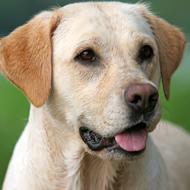
Researchers on the cusp of having a treatment for the disease
A team of researchers have successfully treated dogs with muscular dystrophy using gene therapy. The treatment could pave the the way for clinical trials in humans within the next few years.
The study, published in the journal Human Molecular Genetics, demonstrates for the first time that a common virus can deliver the microgene, which protects against the virus, to all muscles in that of diseased dog.
Muscular dystrophy affects around 250,000 people in the USA and occurs when damaged muscle tissue is replaced with fibrous, fatty or bony tissue and loses function.
Patients with the disease have a gene mutation that disrupts the production of a protein known as 'dystrophin". This is one of the largest genes in the human body and its absence can eventually lead to muscle cell degeneration and death.
Study leader Dongsheg Duan from the University of Missouri explains: “Due to its size, it is impossible to deliver the entire gene with a gene therapy vector, which is the vehicle that carries the therapeutic gene to the correct site in the body.
“Through previous research, we were able to develop a miniature version of this gene called a microgene. This minimised dystrophin protected all muscles in the body of diseased mice.”
In the study, dogs - which have a similar body size to that of a diseased boy - were injected with the disease when they were two to three months old and just starting to show signs of muscular dystrophy. The dogs are now six to seven months old and continue to develop normally.
“The virus we are using is one of the most common viruses; it is also a virus that produces no symptoms in the human body, making this a safe way to spread the dystrophin gene throughout the body,” added Duan.
“These dogs develop muscular dystrophy naturally in a similar manner as humans. It’s important to treat DMD early before the disease does a lot of damage as this therapy has the greatest impact at the early stages in life.”
Margaret Proctor Mulligan from the University of Missouri's School of Medicine said: “This discovery took our research team more than 10 years, but we believe we are on the cusp of having a treatment for the disease.”



 The RCVS has announced a new version of its 1CPD mobile app, with enhanced features for veterinary surgeons and veterinary nurses to record their continuing professional development.
The RCVS has announced a new version of its 1CPD mobile app, with enhanced features for veterinary surgeons and veterinary nurses to record their continuing professional development.